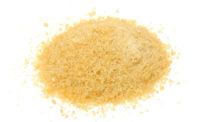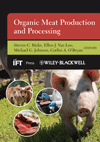What’s the difference between carbixide or fruit peels? Turns out, quite a bit.
Gums, binders and emulsifiers are USDA-approved ingredients in meat and poultry products that add texture, hold them together, retain moisture and offer product stability. But as consumers demand more transparency on product labels, they are requesting fewer ingredients or, at least, ones that don’t sound like they come from chemistry class.
“Consumers have an idea of what clean labels are, but they can be at odds with science,” says Dennis Seisun, founder, IMR International, based in San Diego, Calif. “The less ingredients used, the more consumers seem to like products.”
According to C+R Research conducted for the Institute of Food Technologists Annual Meeting and Food Expo this summer, nearly seven in 10 consumers read labels on a regular basis.
And the food industry has responded by “cleaning” labels by removing synthetics and ingredients that aren’t natural, says Catherine Adams Hutt, Ph.D., chief science and regulatory officer of Sloan Trends and principal at RdR Solutions, based in Dallas.
“Manufacturers are moving from chemicals to ingredients with a natural base,” says Adams Hutt. “The energy is strong for clean labels, but they are in the eye of the beholder. Consumers want ingredients they would find in their pantries.”
Most gums, in fact, are derived from seaweed, seeds or exudates, or tree sap (like gum arabic). Guar gum dates back thousands of years to ancient Egypt.
Carrageenan has been used for hundreds of years since the Irish gathered it from seaweed.
“But consumers are scared of carrageenan and pushed for it to be removed from soy and almond milk,” says Seisun. “All studies and reviews from the FDA (Food and Drug Administration) and other regulatory bodies worldwide have found there are no problems with carrageenan; it’s even used in baby formula.”
But the food industry has been lax in disseminating information to make consumers feel comfortable with these ingredients, says Seisun.
“The industry is trying to be more transparent, and do a better job explaining their ingredients,” says Adams Hutt.
Adding value
The last 15 years, manufacturers have found nutritional or nutraceutical value in these ingredients, such as nonsoluble or soluble fibers.
For example, guar gum and/or gum arabic (or gum acacia) are soluble fibers and can be added at high enough levels to allow a fiber claim.
“In most cases, hydrocolloids are used in such small amounts that it’s hard to give them nutritional claims,” Seisun says.
In addition, more manufacturers are moving toward organic, non-GMO and fair trade sourcing of their ingredients, Seisun says.
Sustainability is another new feature of these ingredients. “They are all sustainable with many of them coming from seaweed, seeds and trees,” notes Seisun.
According to Seisun, a new feature to consider is their “employment factor,” which is a new designation he has termed.
“Take carrageenan, the production of which employs tens of thousands of seaweed farmers,” Seisun says. “Compare it to, for example, biopolymers and cellulosics, which are produced in large and automated production facilities.”
The use of carrageenan relates to the employment of 120 to 130 times as many people as the use of biopolymers or cellulosics — a high employment factor vs. a low employment factor. This distinction is important because consumers are increasingly concerned about environmental and social aspects, Seisun.
“Discoveries are waiting to be made beyond jells and texturizing for these ingredients as we learn more about gut health or human microbiomes,” says Seisun. NP










